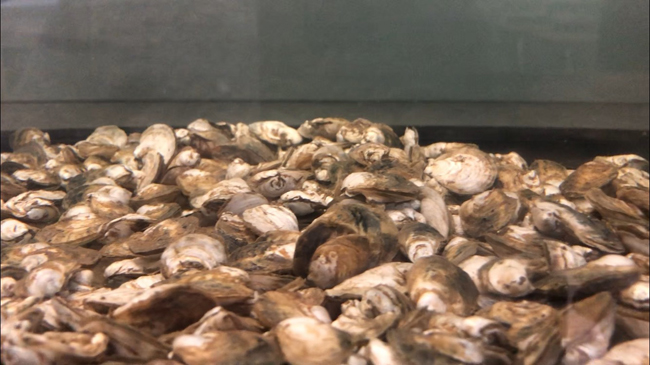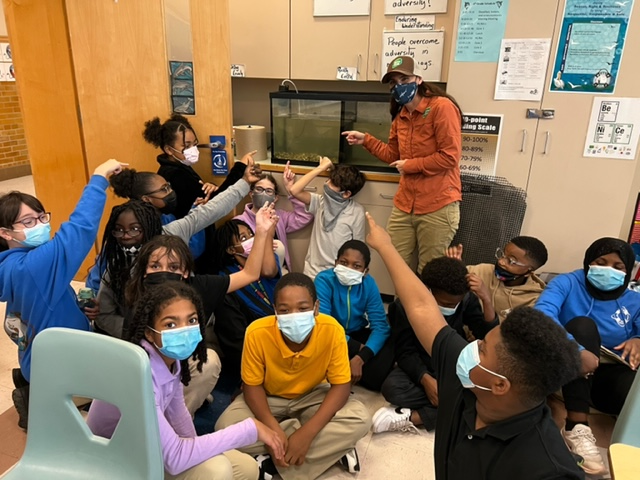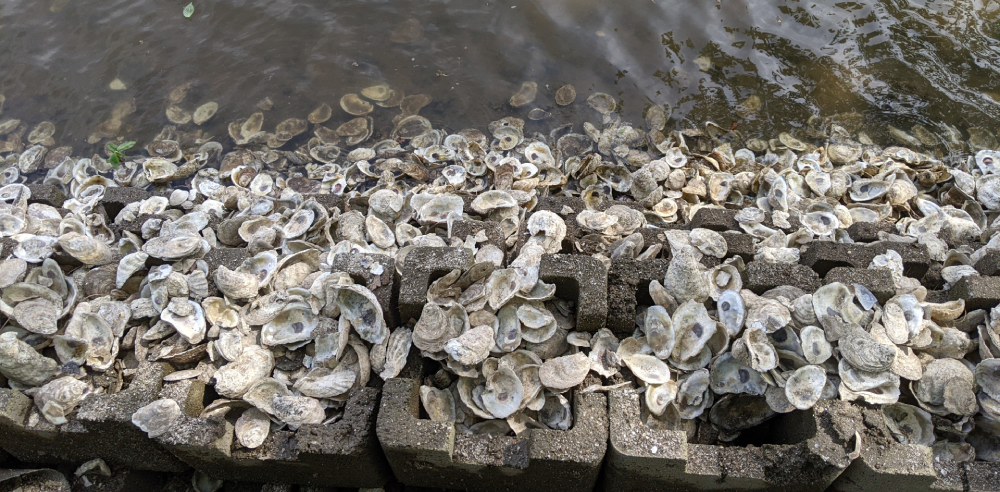Welcome back to the marsh!
Today, we are exploring one of the most important organisms that call these places home, oysters! The Eastern Oyster, Crassostrea virginica, is a bivalve in the mollusc phylum. Oysters are one of the most commercially important species in the James River, and much of the east coast, though oyster populations have been dramatically reduced since the colonization of North America by European powers. As little as 1% of the historic oyster numbers were estimated to inhabit the reefs of the Chesapeake Bay Watershed following the crash of the population. Oysters continue to struggle across the Chesapeake but restoration efforts are underway in many tributaries of the Bay to recover this keystone species. Here in the James River we’re seeing improvements, including a 25% increase in oyster numbers on publicly managed oyster reefs from 2018-2020. In fact, the James River has the distinction of being home to the largest oyster reefs in the world today meal.


Thanks to a Chesapeake Bay Trust grant, James River Association educators are currently helping Newport News high school students raise juvenile oysters, called spat. Arriving to the floating cages that will be their temporary homes around the size of a fingernail, each oyster will grow to market size after a year-and-a-half. During this time, students will measure growth rates and perform calculations on how much water is being filtered by oysters drawing in water to capture microscopic plankton for food. A single adult oyster can draw in fifty gallons of water a day. This has a huge impact on water quality!
After the oysters reach adulthood, they will be released back into the James River. Here, they will be able to continue filtering the river water and spawn, creating new oysters and continuing the cycle.
Do you live in the Lower James River Watershed and want to grow your own oysters? You’ll need a little equipment, patience, and a free permit from the Virginia Marine Resources Commission. For more information on sourcing materials and spat, visit https://www.oystergardener.org/

